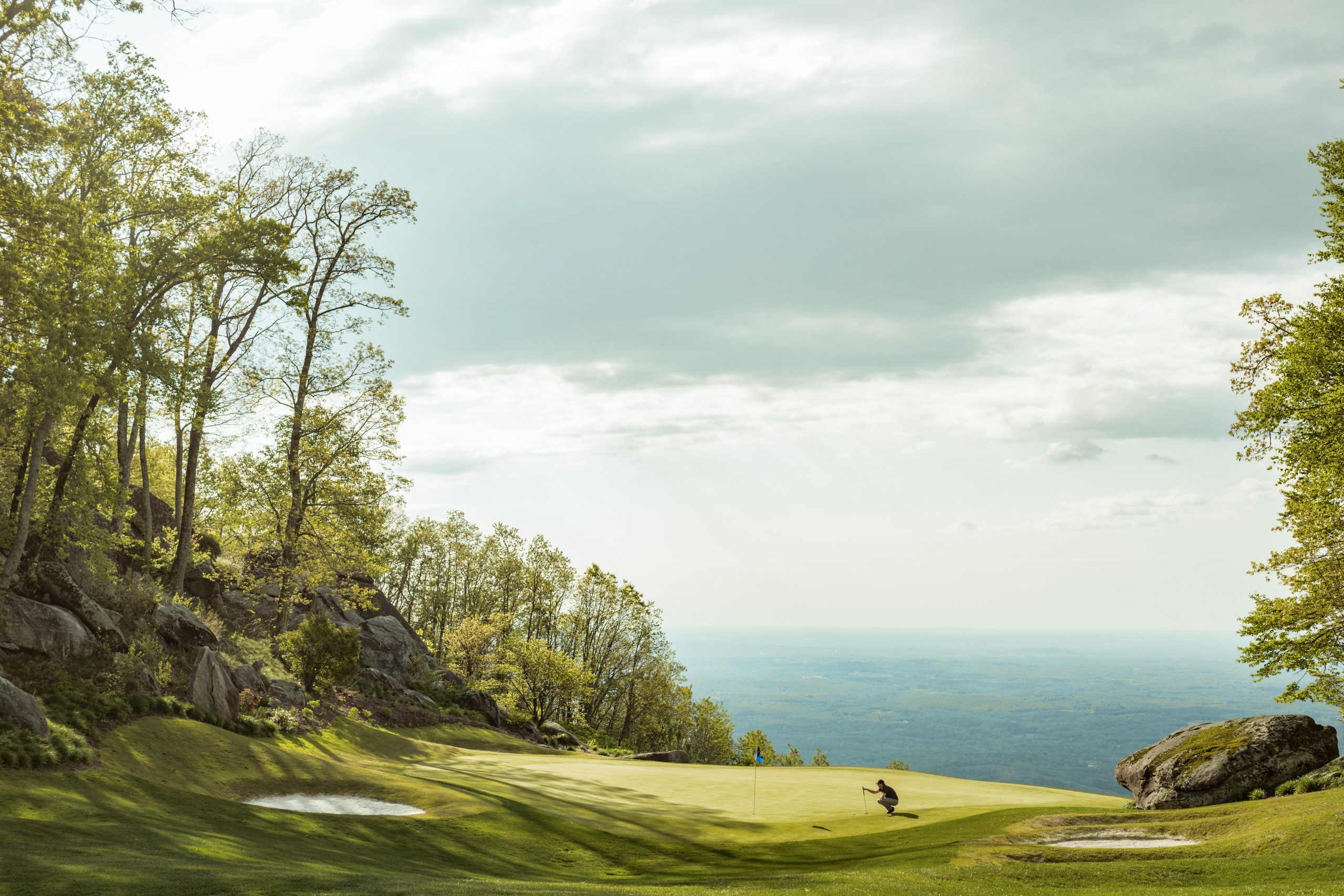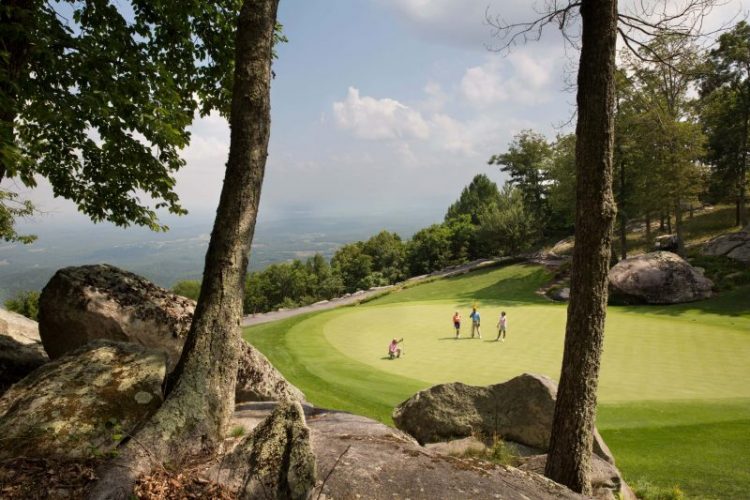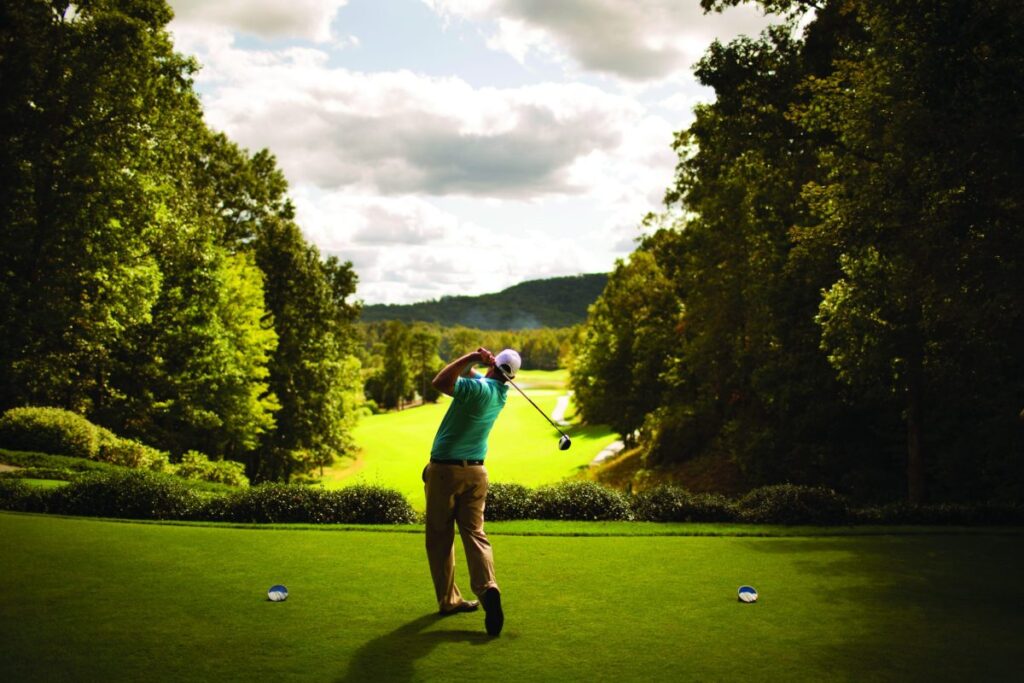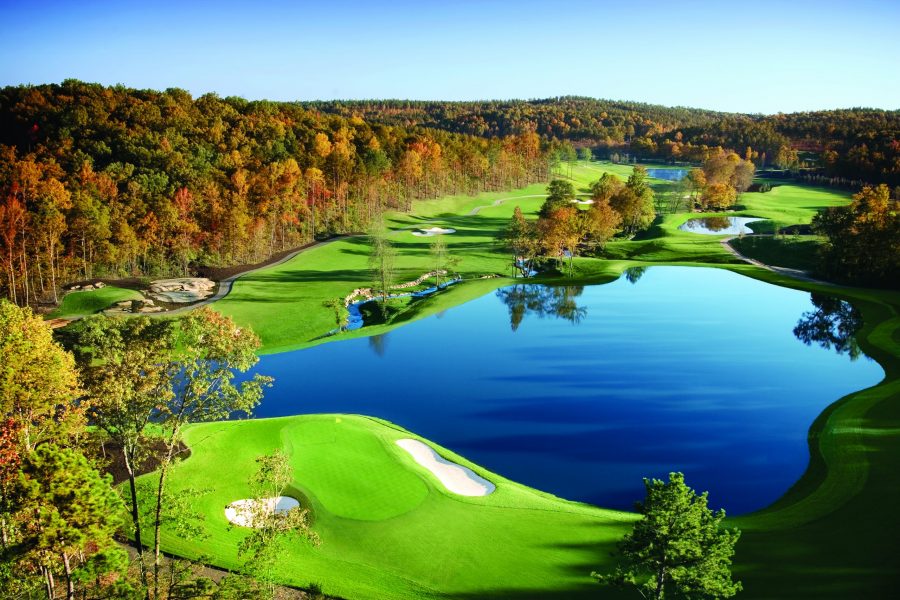Tom Jackson strolls into the clubhouse at The Cliffs at Glassy, exuding a sense of pride as he removes his cowboy hat and takes a seat. The renowned architect of South Carolina’s first — indeed, only — mountaintop golf course still revels in talking about this gem in the Blue Ridge Mountains.
“Every golf hole has its own creativity; its own challenges; its own setting, land features, trees, and contours that all determine what it can potentially look like,” Jackson says. “Once you get a golf hole cleared, that’s when the design starts. Trying to make everything fit nature.” 
A University of Georgia graduate, Jackson learned his craft working under the esteemed Robert Trent Jones. The fledgling designer’s first project — a golf course for Laurance Rockefeller via Jones’ company — was in Puerto Rico. Jackson liked the dirt and he liked the planning. It was a natural fit. His career as a golf course architect was off and running.
The Carolinas Golf Hall of Famer formed his own firm, and even found himself working on perhaps the most prestigious golf course in the world: Augusta National.
“My idea and concept of golf is to have fun,” Jackson says. “I want to challenge you as much as I can. But I don’t want to make it so difficult that you’re not going to enjoy playing and not want to come back.”
Indeed, playability is Jackson’s core design philosophy. “I like a golf course to be visually challenging, but once you learn how to play the golf course, you should be able to play it well,” he explains. “I do a lot of creative greens, contoured greens. The challenge of putting just adds interest to the game.”
By the early 1990s, nearly three decades into his career, Jackson had tackled every terrain imaginable and was distinguished for mountainous designs — thus he was tapped for the project on Glassy Mountain. 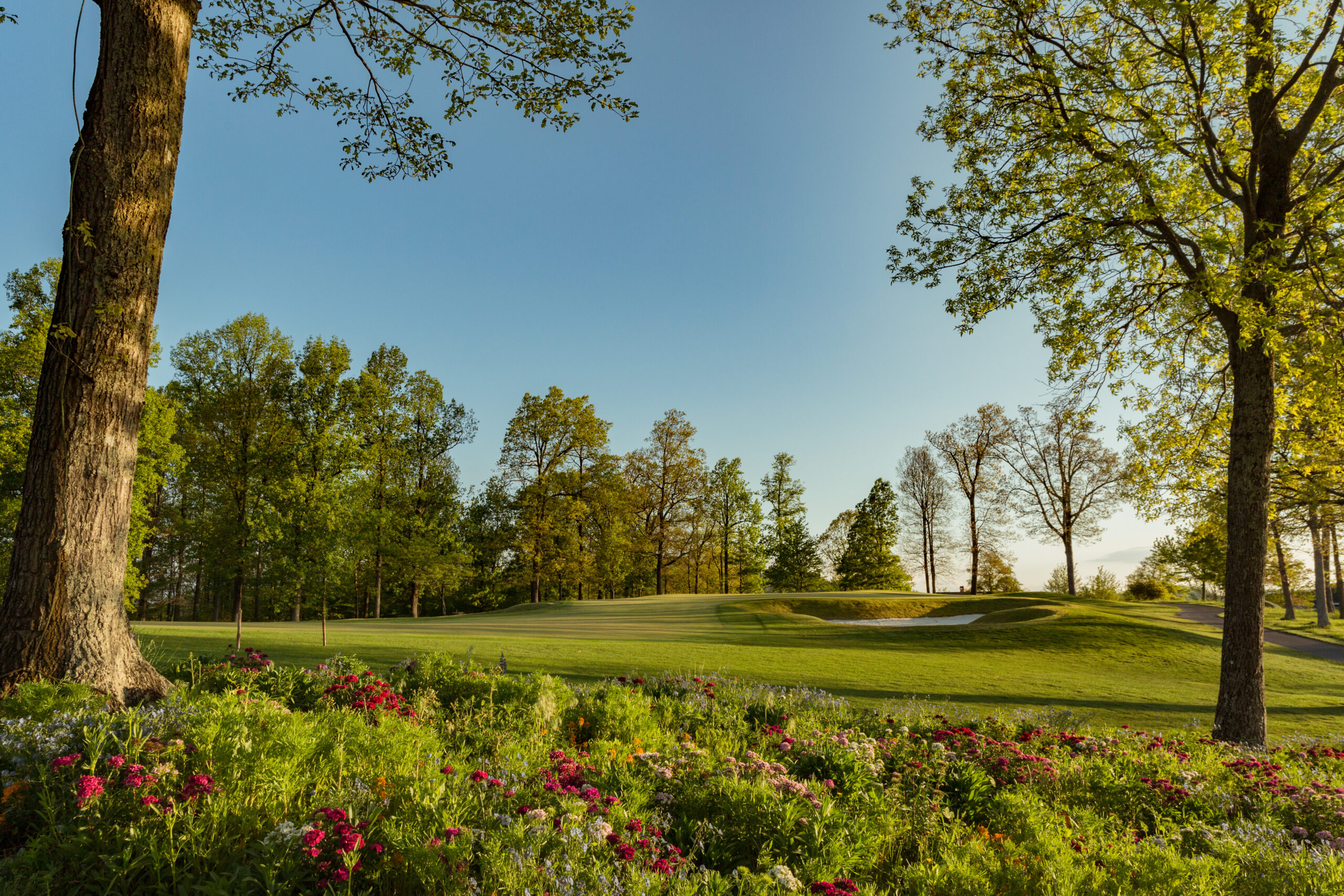
“It was a bit overwhelming because it was such raw land,” he recalls, noting that designing and building a golf course on top of any mountain is no small feat, “but I wanted the Glassy job. I could see the potential. I was a little leery about what we might run into, but I hoped we could overcome whatever that was. And for the most part, we did.”
The aesthetics of Glassy Mountain are mesmerizing, so Jackson’s experience paid dividends on the cliff-hanging holes. As with any design, there were challenges — all requiring creativity to overcome — but none involved moving boulders off the mountain. Those were incorporated into the design; the stacked rocks perched on the stunning No. 13 hole are sitting as originally placed by Mother Nature.
The construction phase at Glassy was beset by torrential rain, soil washouts, and feral pigs that vandalized the vegetation. Once the project was rolling, however, Jackson was invigorated by the drastic elevation changes ready to give players breathtaking views.
“We wanted to build a golf course that was fair and playable,” he says, “but the contours of the land were definitely a challenge. So, in the routing plan, we took advantage of the level areas — the tops of ridges — as much as possible.”
Designing the golf course around the rugged topography dictated the flow of all 18 holes. One key was making sure the tee and landing areas were “up,” and leaving severe contours in between shots.
After the official opening in 1993, The Cliffs at Glassy immediately received critical acclaim, trailing only Pebble Beach, Cypress Point and Augusta National as the most scenic golf course in the country. Legendary company. Jackson was satisfied.
“I think the recognition is well deserved,” he says. “I’m proud of the place. I put my heart and soul into designing this golf course so it’s very gratifying.”
Blind tee shots, aggressive dog legs, and stunning backdrops. With its bentgrass greens, tees, and fairways, The Cliffs at Glassy offers challenges — physical and mental — for all players.
What’s Jackson’s best piece of advice while playing Glassy? “Take your time,” he says, noting his own all-time best round here is 73. “Don’t try to beat the golf course, just play the golf course. There are places that if you can hit the ball, you are going to be successful. Some places on this golf course, though, you definitely don’t want to be.”
This story was featured in Cliffs Living magazine. To read more stories like this one and learn more about The Cliffs, subscribe here.

